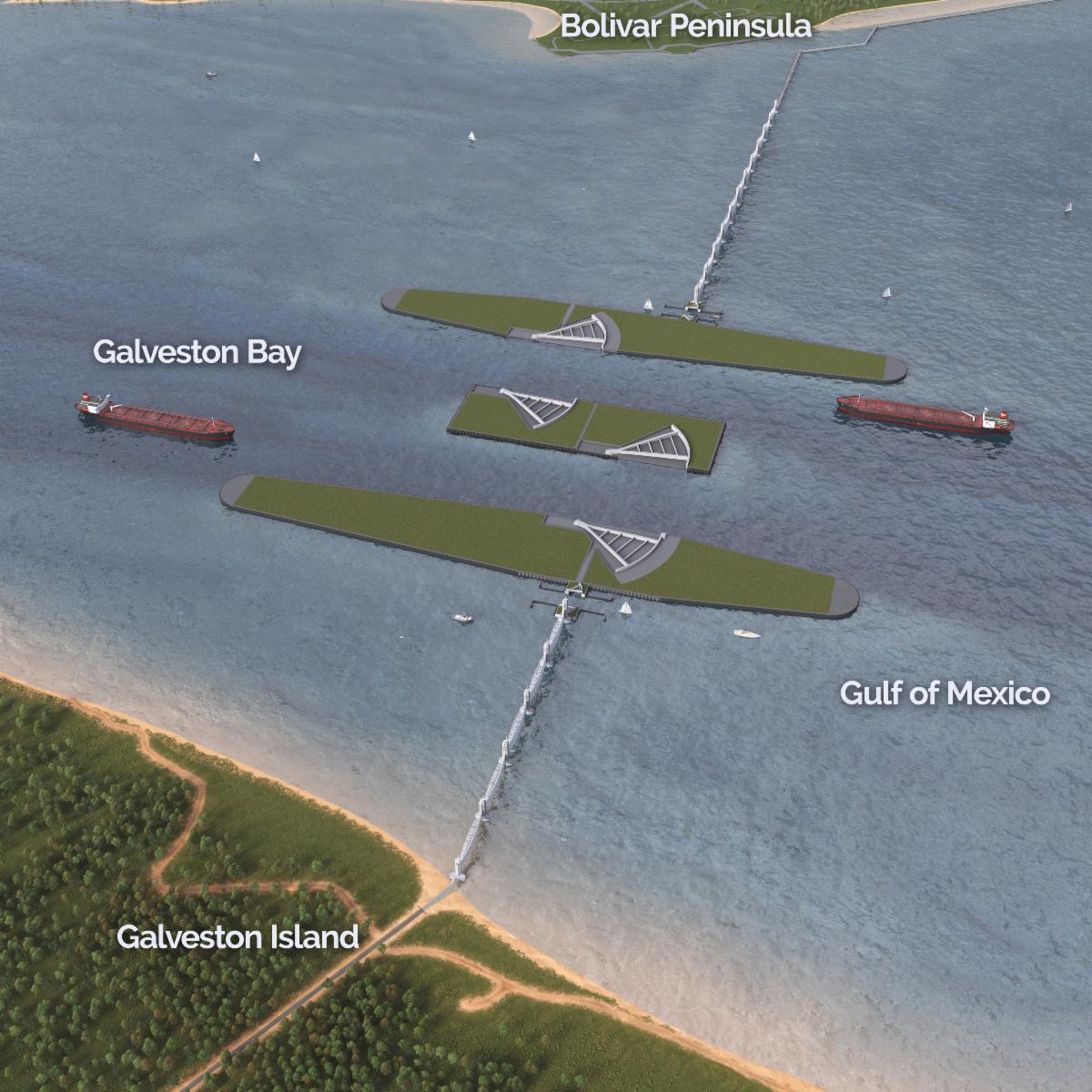The study team of the Texas General Land Office (GLO) and U.S. Army Corps of Engineers (USACE) released a revised Coastal Texas Study draft proposal on October 30 for the construction of a coastal storm surge barrier in Galveston Bay.
 The Coastal Texas Protection & Restoration Feasibility Study, or the Coastal Texas Study, is examining the feasibility of construction projects for coastal storm risk management and ecosystem restoration along the Texas coast.
The Coastal Texas Protection & Restoration Feasibility Study, or the Coastal Texas Study, is examining the feasibility of construction projects for coastal storm risk management and ecosystem restoration along the Texas coast.Formerly known as the Ike Dike, the barrier system originally was estimated to cost up to $32 billion, but recent revisions have lowered the projections to $26.2 billion.
The updated proposal promotes an alternative that was developed to address storm surge flooding at the Gulf interface, but attempted to avoid some of the high and intense surges on a large navigation gate that may be present at the pass to Bolivar Roads.
Their new strategy includes preventing storm surge from entering Galveston Bay, but the large navigation gate would be placed in an area that would avoid direct wave action from the open Gulf. The system would still include a barrier across Bolivar Peninsula, but that structure would be set back north of the Gulf Intracoastal Waterway and would utilize existing dredge disposal sites that are within the area to minimize impacts to the habitat along the peninsula.
The closure at the pass at Bolivar Roads would be north of the existing ferry landing and would tie into the existing Texas City Dike, which would require significant improvements to be able to address coastal storm surge. The system would then tie into the existing Texas City Hurricane Flood Protection Levee system, with improvements to that system, and would include new levee construction farther west into the communities of Hitchcock and Santa Fe.
Due to the uncertainties associated with Gulf and bay driven storm surges on the city of Galveston, this alternative includes a ring levee around the city. To address wind-driven surges in the bay’s upper reaches, nonstructural measures, ring levees, and closures on key waterways were investigated on the west side of Galveston Bay.
The revised draft proposal will undergo a round of public comment before the final feasibility report is released for review in March 2021 by the Texas Governor’s Office, federal, state and local elected officials in the affected areas, state and federal resource agencies, and tribes.
May 2021 is when the USACE chief’s report is scheduled to be submitted to Congress. After authorization, the barrier system is estimated to take two to five years to design and 10 to 15 years to build.
